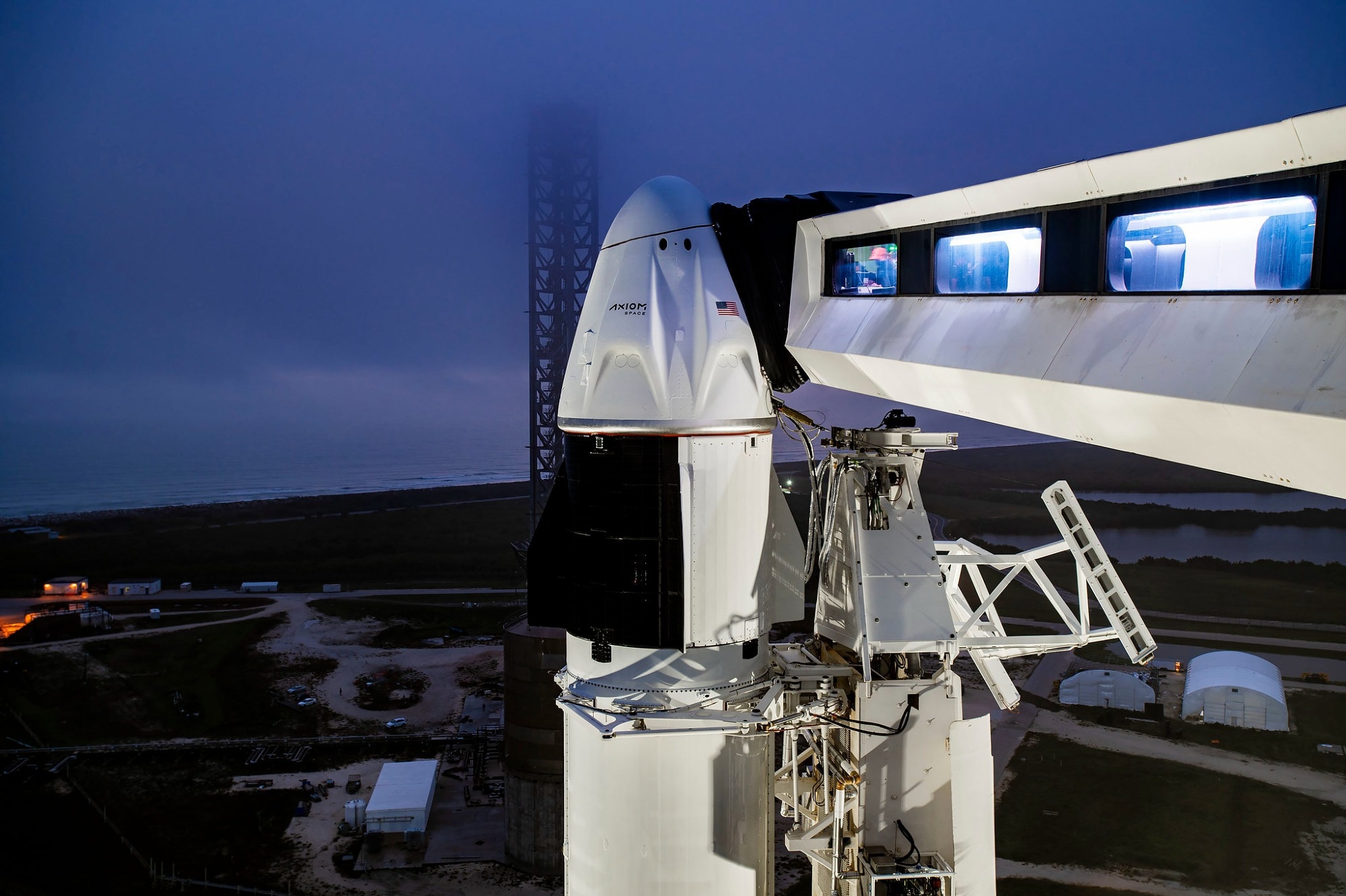More than 5 million people worldwide are living with neurodegenerative disorders like Parkinson’s disease and primary progressive multiple sclerosis (PPMS). Researchers funded by the National Stem Cell Foundation (NSCF) are turning to the microgravity environment of the International Space Station (ISS) to better understand and model what causes these debilitating diseases as part of an ISS National Laboratory®-sponsored investigation flying on Axiom Space’s third private astronaut mission.

Axiom Mission 3 prepares to launch from NASA's Kennedy Space Center to the International Space Station. Image credit: Axiom Space
The mission will mark the fifth flight to the orbiting laboratory for NSCF, which is aiming to study tissue changes within stem cell-derived brain organoids to pinpoint where inflammation begins in the brain. Studies have shown a link between inflammation and these types of neurodegenerative diseases, with specialized immune cells within the body’s central nervous system, called microglia, playing a key role in regulating inflammation.
To that end, NSCF will send human brain organoids derived from patients with two different types of degenerative brain diseases—Parkinson’s and PPMS—to the orbiting laboratory. NSCF CEO Paula Grisanti says that the data collected from this flight is crucial. “We send research to space because we can see the cells interacting in ways that are not possible on Earth,” she said. “By adding microglia, we can begin to see where inflammation begins in those processes.”
According to Grisanti, findings from the investigation will inform the foundation’s next mission set to launch in March. Both flights involve organoids created from induced pluripotent stem cells (IPSCs) from affected patients. Approximately 80 organoids will be studied over the two-week mission before being returned to Earth and to NSCF for further analysis.
The absence of gravity acts as an accelerator, speeding up the aging process we see here on Earth, says Grisanti. “We turn to space because cells mature more quickly in microgravity,” she said. “This means we can see the same changes in cells in a matter of weeks or months in microgravity that might take years to see on the ground.”
A follow-on investigation will fly on SpaceX’s upcoming 30th Commercial Resupply Services (CRS) mission, currently slated for launch in March. On that flight, organoids from patients with Alzheimer’s disease will be added, and all three sets of cells will be studied over the course of a month. Results from both investigations will be used to inform drug discovery as well as clinical trial assessment for novel therapeutics designed to treat these types of diseases.
“By developing human organoids of neurodegenerative diseases, with microglia in the accelerated environment of microgravity, we have added an important new tool and a new way of looking at and understanding how and why neurodegeneration occurs,” said Grisanti.
Through private astronaut missions, Axiom Space and the ISS National Lab partner to expand access to the unique microgravity environment for the benefit of humanity.